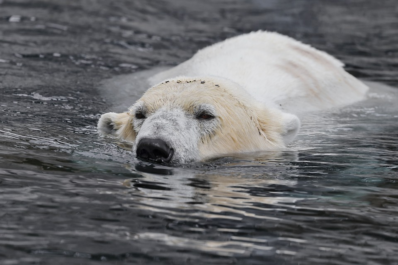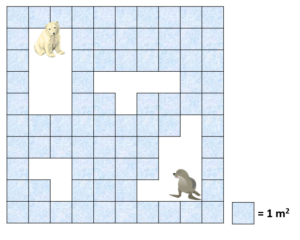Measurement (area & perimeter): Ice Floes
The Problem
Floating on the surface of the Arctic Ocean, a large rectangular ice floe broke into 4 smaller ice floe shapes. These smaller pieces of ice drifted apart and started to rotate. You can see the smaller ice floe shapes in the picture opposite.
What was the perimeter and area of the large rectangular ice floe before it broke into the 4 smaller ice floe shapes?
Is there more than one solution to this problem? How do you know?
Teacher Note: Provide children with the smaller ice floe shapes so that they can be cut out and rearranged, being careful not to leave any gaps.

Did you know?
Although polar bears are strong swimmers, they have been forced to swim longer distances between ice floes (sometimes swimming up to 100 km across open sea to find an ice platform from which to hunt). This can leave the polar bears feeling exhausted and vulnerable to hypothermia.
Visualising the Problem and Getting Started
Martha said, “The perimeter and area of the smallest ice floe shape have the same numerical value.”
Do you agree with Martha? How do you know?


 Sign in
Sign in

